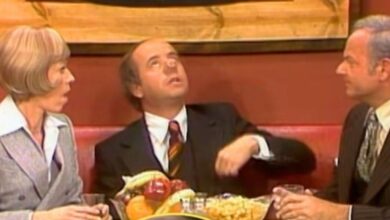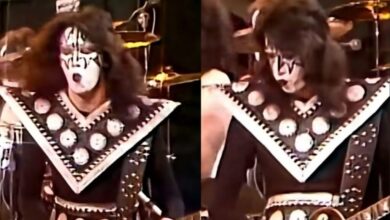Michael Jackson and Freddie Mercury Deliver a Stunning Rendition of “There Must Be More to Life Than This”
When Queen’s iconic frontman teamed up with the King of Pop, it set the stage for one of the most remarkable collaborations in music history. Their story began backstage at a Queen concert in Los Angeles, where a 25-year-old Michael Jackson finally met the 37-year-old Freddie Mercury—a singer he had admired for years. Jackson attended multiple shows before their first introduction, where he also met Roger Taylor, Brian May, and John Deacon.
In the years that followed, the two artists built a friendship rooted in creativity and deep mutual respect. Despite being completely different in personality and artistic style, they found common ground through music. Mercury often praised Jackson’s instincts and even referred to him affectionately as “Little Brother.” By 1983, they began recording together at Jackson’s home studio, working on several tracks—including ‘There Must Be More To Life Than This,’ originally written for Queen’s 1982 album *Hot Space*.
Mercury would later admit that the songs they created together had enormous promise, but their conflicting schedules made completing them impossible. In his biography, *Mercury: An Intimate Biography of Freddie Mercury*, he explained how time slipped away, leaving the collaborations unfinished despite their enthusiasm for the material.
But time was only part of the challenge. Queen’s manager, Jim “Miami” Beach, revealed that Mercury grew increasingly uncomfortable with Jackson’s unusual studio habits—most notably his habit of bringing his pet llama into recording sessions. Eventually, Mercury phoned Beach, frustrated and eager to leave the situation behind.
Reports also indicate that Jackson disliked Mercury’s recreational drug use while working in his home, causing additional tension between them. Their conflicting lifestyles, combined with mounting creative pressures, eventually pushed their partnership to a breaking point, halting the sessions before they could be completed.
The collaboration’s collapse didn’t end the story. In 1985, Mercury revisited the material and released a reimagined solo version of the song on his debut album *Mr. Bad Guy*. It kept the spirit of the collaboration alive, even though the joint project remained unfinished.
It wasn’t until after Mercury’s death in 1991 and Jackson’s in 2009 that the long-awaited duet finally emerged. In 2014, the completed version—produced and mixed by William Orbit—appeared on Queen’s album *Queen Forever*. Built on the original 1981 instrumental tracks featuring May, Taylor, and Deacon, it offered fans a long-lost glimpse into a musical moment that had once seemed destined to remain hidden forever.
Decades later, the track stands as a rare fusion of two of the most influential performers in music history, preserving a collaboration that nearly slipped away—and reminding listeners of the brilliance that can arise when two worlds collide, even briefly.
The renewed interest in their work only grew stronger once fans heard the restored version. It captured the shared energy of Mercury and Jackson while preserving the rawness of their original performances, making it one of the most beloved posthumous releases in Queen’s catalogue.
Today, the collaboration is remembered not just for what it became, but for what it almost was—a brief yet powerful meeting of two musical giants, whose artistic worlds intersected just long enough to leave behind a piece of history.





